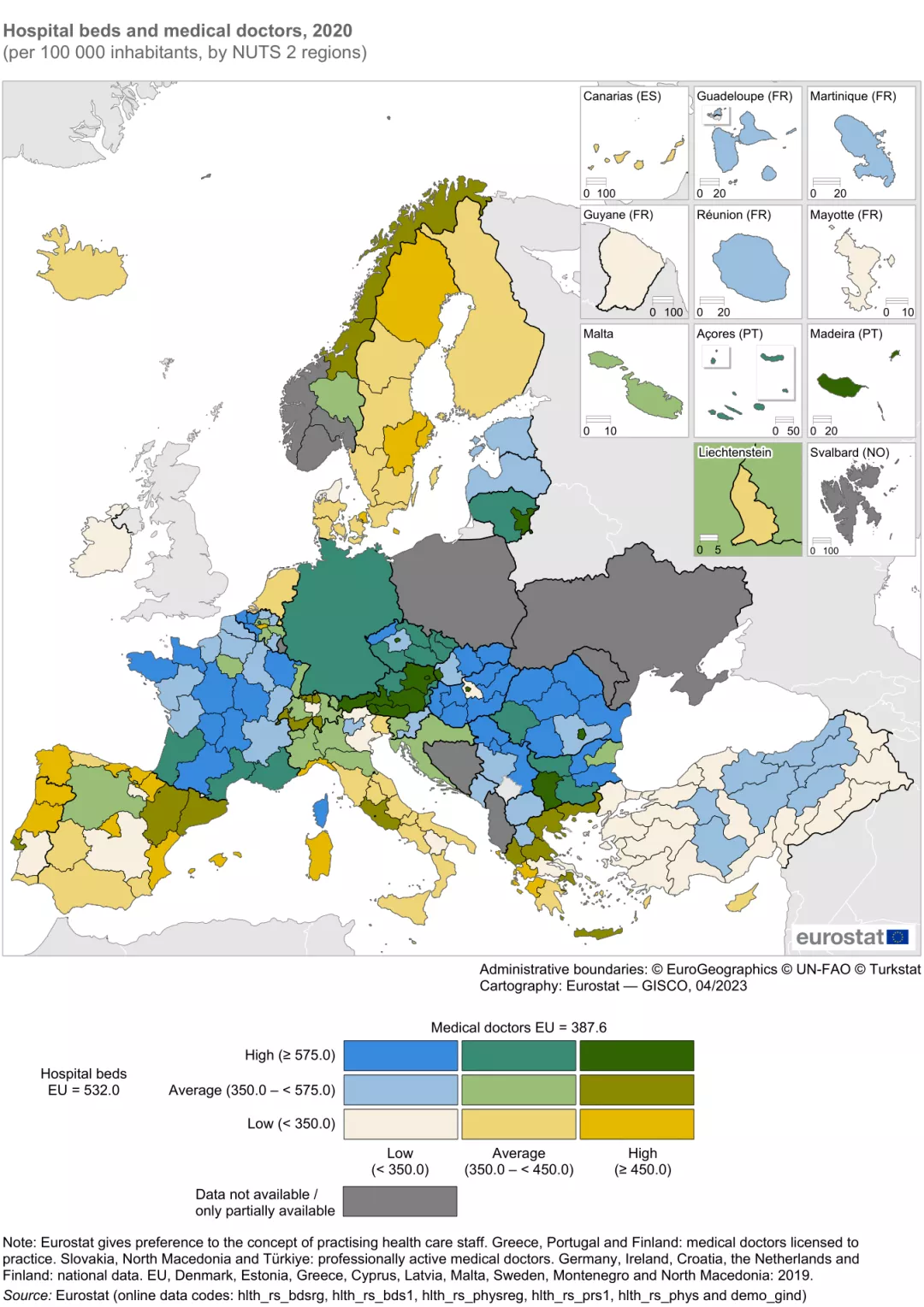Eurostat Regional Yearbook 2023 is now available
- Rural Pact
- Rural Revitalisation Platform
- Stronger Rural Areas
- Research and innovation
- Resilient rural areas
- Health and care
The Eurostat Regional Yearbook 2023 is your comprehensive guide to statistical data across EU, EFTA, and candidate countries' regions. Understand the impact of policy decisions through a wide array of indicators.
The Eurostat Regional Yearbook 2023 aligns with the European Year of Skills, offering vital data that can help policymakers and stakeholders better understand the state of skills and education across various EU, EFTA, and candidate countries. It offers an in-depth view into 13 key subjects, including population, health, education, and more. The data in the Eurostat Regional Yearbook 2023 is not only presented through maps, figures, and infographics, but each is also accompanied by analytical text to elucidate key findings. Additionally, all maps featured in the Yearbook are accessible in the Statistical Atlas as interactive maps, allowing for a more in-depth exploration of data down to the smallest regions. For those interested in deeper insights, the Regions in Europe - 2023 interactive edition provides dynamic visualisations coupled with concise, objective texts, making it an invaluable resource for both classroom education and independent study.

In light of the comprehensive insights provided by the Eurostat Regional Yearbook 2023, the map detailing the distribution of hospital beds and medical doctors per 100,000 inhabitants by NUTS 2 regions is especially important for rural communities. This data serves as a crucial metric for understanding healthcare accessibility and resource allocation in less urbanised areas. With the Yearbook's emphasis on interactive, map-based information through the Statistical Atlas, stakeholders can delve into granular data to identify and address disparities in healthcare resources between urban and rural regions. This targeted information allows for more nuanced policy interventions, serving as a vital tool for fostering equitable healthcare infrastructure in the EU's rural areas.
Read it here